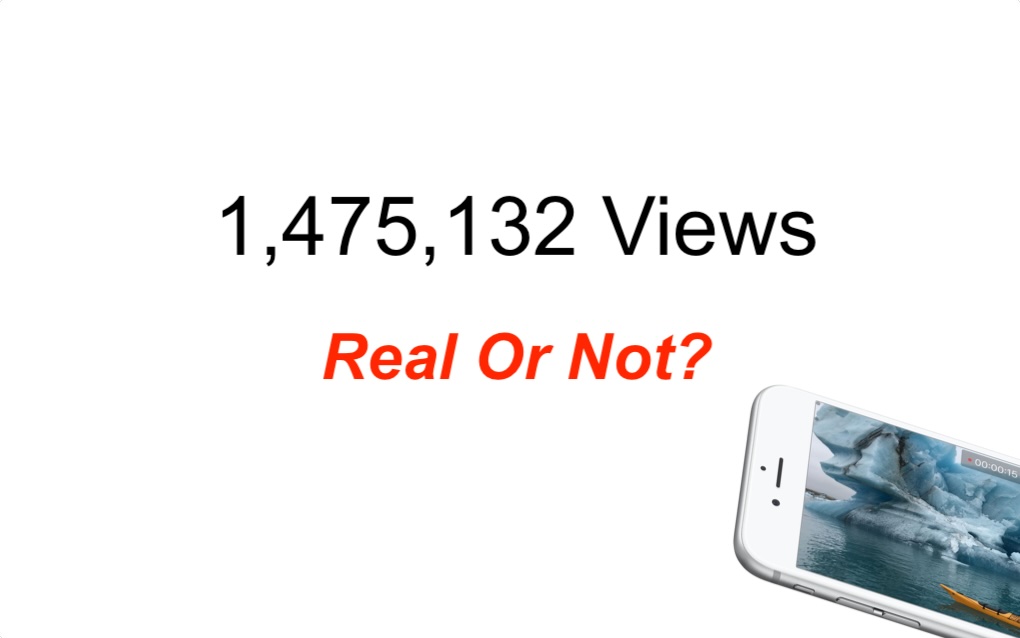Are View Counts Real on YouTube, TikTok, Instagram, Facebook?
View counts dominate every social platform – but are view counts real on YouTube, TikTok, Instagram , Facebook and more? Bobby Owsinski explores the truth about views and how misleading metrics are fooling creators, advertisers, and audiences alike.
Are View Counts Real On YouTube, TikTok, Instagram & Facebook?
by Bobby Owsinski via Music 3.0
Views are the most visible and celebrated metric on the internet, and every platform from YouTube to TikTok, Instagram, Facebook, and even X and Threads prominently features view counts. The reason is that views are supposed to represent popularity, engagement, and success online, but the harsh truth is that these views are often meaningless, manipulated, and highly misleading.

What Counts as a View?
Platforms define views differently, often in ways that inflate the numbers dramatically. For instance, Instagram, TikTok, and YouTube Shorts count a view the moment a video starts playing. That means even a brief scroll past content registers as a complete view, regardless of whether you truly engaged with it or instantly skipped past.
On Facebook, things get even murkier. Facebook counts views anytime content appears on a screen, blending passive scrolls with intentional watches. Facebook’s metrics are so loosely defined that they had to introduce additional, more realistic metrics like “three-second views” and “one-minute views,” though these aren’t publicly shared because, of course, they yield lower, less flattering numbers.
At one time Netflix required viewers to watch 70% of a program to count as a view, but it now sets the bar at just two minutes. Why? Because two minutes dramatically boosts their view counts by around 35%, according to Netflix themselves.
Here’s a quick overview chart showing how long you must “watch” to register a view:
| Platform | Time Required to Count as a View |
|---|---|
| Instant (any autoplay) | |
| TikTok | Instant (any autoplay) |
| YouTube Shorts | Instant (any autoplay) |
| Instant (on-screen appearance) | |
| X | 2 seconds |
| Netflix | 2 minutes |
| Standard YouTube | Approximately 30 seconds |
Why Do Platforms Inflate View Counts?
Inflated view counts are good for the various social platforms because it makes them seem more popular than they really are. High view numbers attract creators looking for visibility, and maybe most importantly, advertisers seeking more reach.
This inflated metric creates a sort of endless loop, with more perceived views leading to more engagement, even if any real interaction is actually low.
Not surprisingly, platforms also tightly control the definition of views to suit their particular needs because more views attract more creators, advertisers, and attention, giving the illusion of success and popularity.
Views Are Not Genuine Engagement
This misleading counting system makes it hard for creators and advertisers to understand the real engagement that actually happening with their content. Real metrics such as genuine watch time, clicks, and user interactions are often hidden behind inflated public-facing numbers. Platforms like YouTube even acknowledge this by distinguishing between simple views and “engaged views” when calculating payouts.
The bottom line is that the online metrics that we all relied on so much a few years ago, especially views, are deeply flawed. They’re inflated and manipulated for appearances sake only, and have little to do with actual reality. Remember that views don’t necessarily indicate genuine interest, as they’re simply numbers inflated by a particular platform’s rules. Views, unfortunately, are lies.
Bobby Owsinski is a producer/engineer, author, blogger, podcaster, and coach. He has authored 24 books on music production, music, the music business, music AI, and social media.